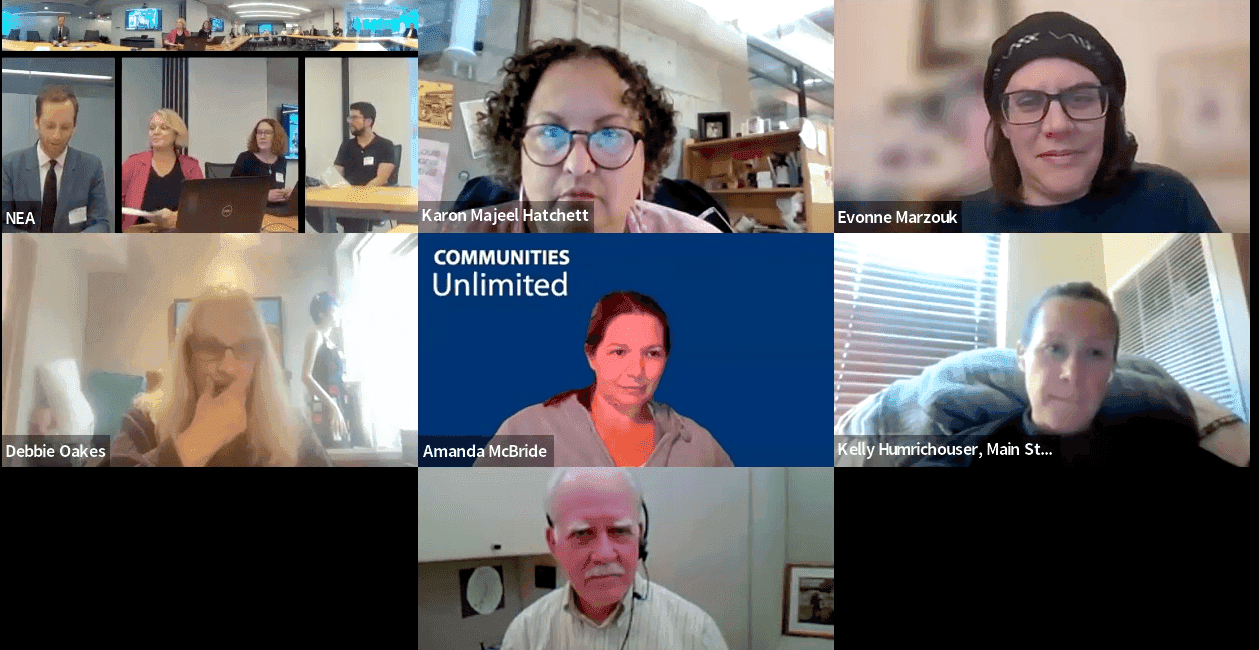
News
By Rachel Ellis, October 1, 2024
Rural communities face unique challenges when it comes to growth and development. At the recent Smart Growth Network meeting hosted by the National Endowment for the Arts, experts came together to discuss how smart growth principles can be applied effectively in rural settings.
The Smart Growth Network (SGN) is a national alliance of advocates, practitioners, policymakers, and local leaders working towards a shared vision for land use and infrastructure policies and actions that result in healthy, sustainable, equitable, and prosperous communities for all. At their quarterly meeting, participants stressed the importance of recognizing the difference between rural and agricultural issues and how to harness the power of art as a resource for revitalizing small towns. Several panelists came together to highlight innovative approaches, practical advice, and lessons learned from applying smart growth principles in rural contexts.
Key takeaways from the panelists
Panelists Kory Hayden (Siskiyou Economic Development Council), Christine Sorenson (USDA Rural Development’s Rural Partners Network), John Robert Smith (Smart Growth America), and Joel Mills (Architects Foundation’s Center for Communities by Design) discussed the importance of community engagement, how to leverage existing assets to create incremental change, and how to apply smart growth principles to individual communities, which are all unique. They underscored the importance of preserving a community’s sense of place and history while helping it transition toward a sustainable future.
Understanding rural communities
In our report An Active Roadmap: Best Practices in Rural Mobility, we outline seven rural typologies—from resource-dependent towns to college communities and tribal areas. Understanding a communities’ typologies can help decision-makers get a better sense of the community’s needs and the best approach to advance change.
Housing affordability in rural areas was a major theme. As the panelists pointed out, affordable housing must be addressed before it becomes a critical issue. Solutions include repurposing vacant lots, looking to upper floors in downtown buildings, and considering smaller housing models. When residents become first-time homeowners, they can feel a stronger connection to the community, which encourages civic engagement.
The role of art in rural revitalization was another topic mentioned throughout the discussion. Art can be a powerful bridge in reclaiming and representing a community’s history, and artists play a valuable role in placemaking. The panel highlighted examples from Missouri, where housing for artists without traditional credit histories is being explored. This helped uplift the importance of artists' contributions to rural revitalization efforts.
Avoiding common pitfalls
The panel also addressed common missteps when applying smart growth in rural areas. As Joel Mills pointed out, rural communities often express that “what works elsewhere might not work here.” Going beyond technical plans and focusing on implementation strategies that are culturally relevant is a vital aspect of applying smart growth to rural places. The work can be especially challenging in communities with a distrustful public, where relationship-building and transparency are key to success.
Looking forward: Bringing smart growth to small towns
The meeting wrapped up with breakout discussions, focusing on visioning and resources for rural communities. Participants stressed the need to lead with smart growth and Complete Streets principles like walkability and bikeability that can be tailored to support a variety of contexts and types of places. As rural communities across the country continue to evolve, the application of smart growth principles is critical to fostering sustainable, vibrant places where residents can live, work, and thrive for generations to come. When change is approached not just as a technical exercise, but as a deeply communal and cultural process, chances of success are far more likely.
Check out the conversation by viewing the webinar!
Related News

© 2025 Smart Growth America. All rights reserved
Site By3Lane Marketing




















